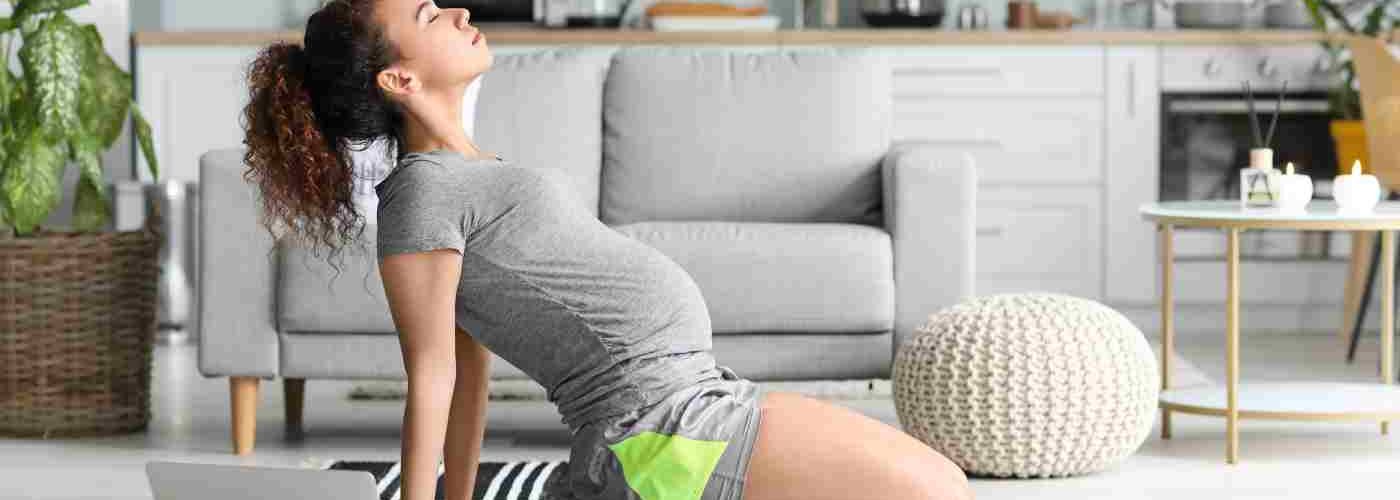
Exercise during pregnancy is one of the best things you can do, along with a healthy diet, to give yourself the best chance of a trouble-free pregnancy and birth. The benefits of prenatal exercise include both the mother and the developing baby.
Today we speak about Yoga vs. Pilates, which is the right option? In this IVI blog article, we’re wading into the debate about two of the most effective and fun exercises. Which is better for pregnant women? Let’s consider the evidence.
Pilates for pregnancy
One of the reasons Pilates is so popular among expectant mothers is that your toned muscles will support a comfortable pregnancy as well as delivery. Pilates is also well known for being one of the most effective ways to regain your pre-pregnancy figure afterwards.
Another advantage is its adaptability. The exercises can be modified as the pregnancy progresses, so you can keep the benefits but make adjustments along with the changes to your body. If back pain is a particular issue for you, you can find out more from our article on back pain during pregnancy.
Before starting, always make sure that your trainer or tutor knows that you are pregnant, and that the routine you are following is pregnancy-appropriate.
Benefits of pilates during pregnancy
All Pilates routines focus mainly on building core strength and low or no-impact muscle-lengthening exercises. These can help with backaches, as well as improving your posture and flexibility. Pilates exercises specifically designed for pregnancy will also strengthen and tone the pelvic floor muscles. This can help to prevent accidental leakage during the last trimester and also after the birth of your baby.
There are two highly beneficial Pilates routines focused on well-being during pregnancy:
- Enhanced body awareness: Postural hygiene, improved balance, awareness of movement limits.
- Pelvic floor strengthening: Exercises that strengthen the pelvic muscles, preparing for childbirth and ensuring effective postpartum recovery. These can include squats, bridges, or Kegel exercises.
Which pilates exercises should you avoid when pregnant?
The watchword for all exercise during pregnancy is moderation. There are a few specific points to bear in mind for Pilates:
- Hormonal changes promote more flexibility and stretch in the muscles and joints, making it easier to cause a strain by overstretching. So, you should restrict yourself to a smaller range of motion and focus on building strength in your core.
- If you are using the specialist piece of Pilates equipment known as a reformer, don’t increase the resistance beyond what you could comfortably do before pregnancy.
Even though prenatal Pilates is not particularly strenuous, always pay attention to your hydration levels and avoid becoming out of breath. If in doubt, try the talk test: if you can’t talk casually at normal speed, it’s time to ease up a little bit.
Yoga for pregnancy
Yoga is a multi-discipline approach to prenatal exercise that encourages mental centring, stretching and a focus on breathing. This is one of the safest sports for pregnant women.
The physical and mental benefits of prenatal yoga
Its benefits include improved sleep and reduced anxiety and stress, an improvement in the strength, endurance and flexibility of the muscles involved in childbirth and a reduction of lower back pain, headaches, nausea and shortness of breath. Some of the techniques that produce these benefits include:
- A focus on breathing slowly through the nose. This technique can help to improve shortness of breath during pregnancy and manage labour contractions.
- Gentle stretching, moving different parts of your body, especially your neck and arms, through their full range of movement.
- Improved flexibility and strength with some specific postures. You can use blankets and cushions to provide comfort and support.
- Stress reduction and relaxation. Cooling down and relaxing at the end of the session will encourage you to pay close attention to your thoughts and emotions, in effect practising the mindfulness that can be very helpful during labour.
Yoga poses to avoid during pregnancy
Start by avoiding yoga in a room that is too hot for comfort. Especially avoid ‘hot yoga’ which has a room temperature of 35 to 39 °C. You need to prevent your own body temperature from rising too much in order to protect your baby.
Finding a class specifically geared up for prenatal yoga means also avoiding some poses and movements:
- Deep back bends, as well as full inversion positions like headstands or handstands. These could cause blood pressure problems.
- Extreme stretching. The increased relaxation of your ligaments during pregnancy, is more likely to cause injuries.
- Wide squats and walking lunges. Your increasing body weight is going to put more load on your pelvic floor and joints, so it’s important to stop at the first sign of any discomfort.
Always warm up and warm down thoroughly and be sure to keep within your comfort zone.
Differences between pilates and yoga for pregnancy
Yoga and Pilates improve body posture and tone muscles, although they have some differences:
- Overall Concept: Pilates focuses on muscle tone, stretching, strengthening, in harmony with breathing, while yoga aims for overall physical and mental balance.
- Necessary Equipment: Pilates can be practiced even with machines, whereas for yoga, the basic requirement is a mat, although there are also accessories.
In summary, we could say that pilates is mainly a physical exercise, compared to the more spiritual component of yoga.
As we have explained, both are advisable for pregnancy, with some contraindications as well. Below, we summarize the pros and cons.
Pros and cons of yoga
Yoga provides a mental balance that is very beneficial during pregnancy, helping to reduce possible moments of anxiety or stress. Additionally, it promotes flexibility and circulation, which can alleviate muscle aches (back pain, lower back) or discomfort as the pregnancy progresses.
However, some poses can be complex or pose certain risks during pregnancy. Moreover, it increases the likelihood of overstretching injuries due to the hormone relaxin. This hormone is secreted during pregnancy to relax the uterus for childbirth.
Pros and cons of pilates
Pilates strengthens the muscles, which is very helpful during pregnancy, especially for the back, pelvis, and lower back. The routines can be adapted as the pregnancy progresses, helping to prevent injuries and improper stretching.
However, this can also be counterproductive if not managed properly, so it is important to regulate the intensity of the exercises. Therefore, it is advisable to consult an expert who can adapt the routine to the progress and needs of the pregnancy.
Which one is right for you?
And the winner is … your choice! If you already love Pilates, or if yoga is your go-to activity, stick with what you enjoy. Pilates vs yoga? It’s entirely up to you.
Remember the key points we have discussed in this blog:
- Both yoga and Pilates are advisable and can help reduce discomfort and pain during pregnancy.
- Yoga provides physical and mental balance, while Pilates helps strengthen muscles in certain postures.
- Both exercises should be adapted to your needs and stage of pregnancy to avoid risks.
The main rules are to keep active, don’t over-do it and above all enjoy your workout. If you’re new to exercise, now is not the time to sign up to a strenuous new activity but try to keep active on a daily basis. Even walking for 30 minutes will pay dividends by helping you to cope with labour and get back into shape after the birth.
To conclude, we answer three of the most frequently asked questions about practicing yoga or Pilates during pregnancy:
How often should I practice prenatal yoga or Pilates?
The frequency with which you practice either of these exercises will depend on your needs, your pregnancy, and how far along you are. Always consult with a specialist to know what to do in this regard.
Is it safe to practice yoga or pilates during high-risk pregnancies?
High-risk pregnancies involve potential dangers that must be assessed by a specialist. Therefore, you should not practice any exercise, no matter how harmless it may seem, without a doctor’s approval.
Is it safe to start yoga or pilates during pregnancy if I’ve never done it before?
In general, it is not advisable to start any new physical activity during pregnancy. However, since these are low-impact exercises, a specialist can advise you if it is safe for you to do so.





Comments are closed here.